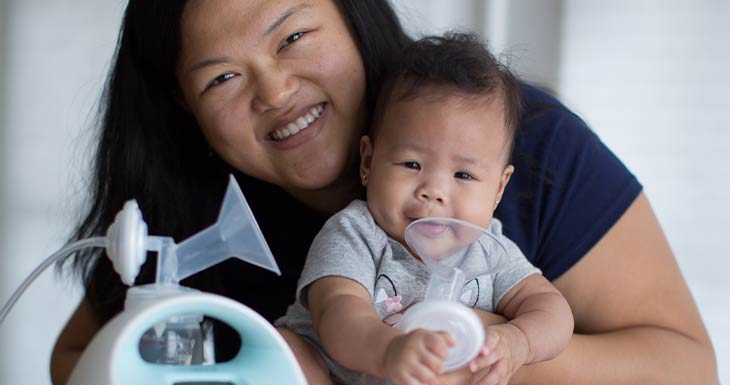Summertime With Your New Baby
Summertime With Your New Baby
Melissa Portunato MPH, IBCLC, RLC
Summer is finally here! Time to hit the road, spark up the grill or hit the beach with the family for some fun in the sun. Check out our best advice on keeping baby happy and healthy while enjoying the outdoors this summer.
Will I need to bring along drinking water to give my baby?
Did you know that breastmilk is 80% water? Yep! It’s not necessary to give an exclusively breastfed baby water as long as mama is hydrated and they have free access to the breast or breast milk. Your baby will get all the hydration they need just from your breast milk! Infants less than 6 months should receive their nutrition exclusively from breastmilk, which means no other fluids should be given even in hot climates.
Can I put sunblock on my baby?
Your best defense will be to keep your baby in the shade and covered up. The general recommendation is to wait until your baby is 6 months before lathering them up in sunscreen. There are some sunscreens that are safe for younger babies. Check with your pediatrician before you’re ready to be in the summer sun with your baby. The majority of sunscreens on the market have toxic chemicals that are harmful to your baby and the environment. Look for a baby sunscreen with the active mineral ingredients of zinc oxide and titanium dioxide, these are ingredients the FDA recognizes as safe.
What about bug repellent? Is it safe for my baby?
The skin of a baby is so tender. It can be scary spraying it with bug spray and wondering if the ingredients are safe or will cause an allergic reaction. Most insect repellents are safe for babies over 2 months old. The American of Pediatrics recommends not to use DEET (N, N-diethyl-3-methylbenzamide) on babies less than 2 months old and not to use more than 10% DEET on a child of any age. It’s best to spray first on your hand and then on your baby. Natural repellents that contain essential oils from plants like citronella and lemongrass can be quite effective and will be the safest route to keep your little one bite free. You might want to consider mosquito netting around your baby’s stroller or bassinet to help keep those blood suckers out too!
Keep You and Your Breastmilk Cool
You will get extra thirsty breastfeeding, caring for your baby, and lugging around all the outdoor props. Remember to stay hydrated mama! Carry a refillable water bottle with you and drink to thirst. If you are pumping on the go, keep your milk cool up to 24 hours with our pretty pink cooler. Check out the CDC guidelines for milk storage guidelines here.
Hitting the road this summer with your baby? Do you have questions about pumping on the road? Schedule a one on one consultation with a Spectra IBCLC today. We can help you better plan! Less stress means more summer fun with your baby.
Sources:
Academy of Breastfeeding Medicine Clinical Protocol #3: Supplementary Feedings in the Healthy Term Breastfed Neonate, Revised 2017. Breastfeed Med. 2017;12(3). DOI: 10.1089/bfm.2017.29038.ajk
American Academy of Pediatrics: Choosing an Insect Repellent for Your Child, July 2018.




